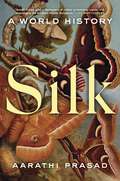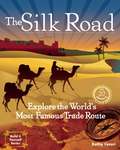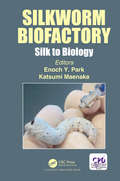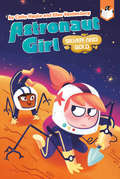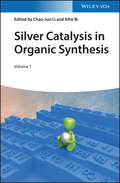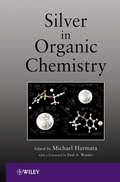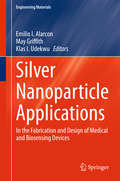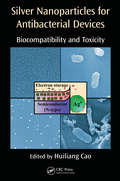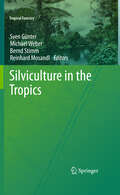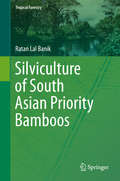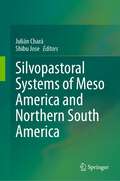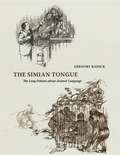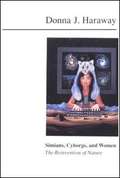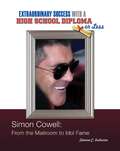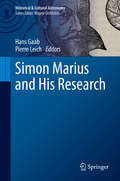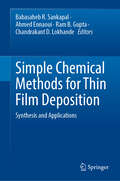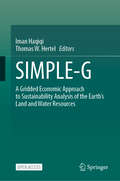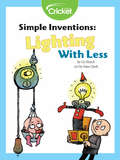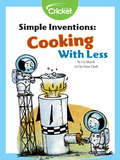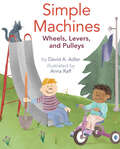- Table View
- List View
Silk: A World History
by Aarathi PrasadA Next Big Idea Book Club Must-Read for April"Aarathi Prasad spins a masterpiece of a story, as luminous, supple, and surprising as the wondrous threads themselves." —Sy Montgomery, bestselling author of The Soul of an Octopus and Of Time and TurtlesThroughout history, across cultures and countries, silk has reigned as the undeniable queen of fabrics, yet its origins and evolution remain a mystery. In a gorgeous and sweeping narrative, Silk weaves together its intricate story and the indelible mark it has left on humanity.Some four thousand years ago, the cultivation of silkworms began, the practice spreading to the far reaches of civilization. With it came a growing obsession with unlocking silk’s secrets to understand how the strongest biological material ever known could be harnessed.Explorers and scientists, including groundbreaking women who pushed the boundaries of societal expectations, dedicated—even sacrificed—their lives to investigate the anatomy of silk-producing animals. They endured unbelievable hardships to discover and collect new specimens, leading them to the moths of China, Indonesia, and India; the spiders of Argentina, Paraguay, and Madagascar; and the mollusks of the Mediterranean.Rich with the complex connections between human and nonhuman worlds, Silk not only peers into the past but also reveals the fiber’s impact today, inspiring new technologies across the fashion, military, and medical fields, and shows its untapped potential to pioneer a more sustainable future.The culmination of author and biologist Aarathi Prasad’s own lifelong passion and grounded in years of research and writing, Silk is an intoxicating read that provides an essential illumination of nature’s most glamourous thread.
The Silk Road
by Kathy CeceriFrom Roman times until the Age of Exploration, the Silk Road carried goods and ideas across Central Asia between two major centers of civilization, the Mediterranean Sea and China. In The Silk Road: Explore the World's Most Famous Trade Route, readers ages 9-12 will learn about the history, geography, culture, and people of the Silk Road region.Marco Polo was just one of many who set out on the Silk Road in search of wealth, power, or knowledge. These adventurers braved vast deserts, towering mountain peaks, warring tribes, and marauding bandits. Silk garments, wool rugs, and fine glass were the prizes for those who survived the trip. Activities using everyday materials bring the Silk Road to life. Young readers will see how ideas in math, science, religion, and art were spread by travelers along with the treasures they found.The Silk Road takes readers on an exciting, interactive adventure to a faraway place and celebrates its important role in human history and development..
Silkies and Other Guinea Pigs (World Book's Animals of the World)
by Dan BlunkTopics include: different kinds of guinea pigs, how they are cared for and shown, and where they came from.
Silkworm Biofactory: Silk to Biology (Industrial Biotechnology)
by Katsumi Maenaka Enoch Y. ParkWhile silk derived from silkworm has been of economic importance for centuries, more recently silkworm has been found to have utility in biomedicine. This has attracted attention for expressing eukaryotic recombinant proteins, which require post-translational modifications. In 1985 Dr. Susumu Maeda demonstrated that silkworm larvae could produce a functional human-interferon. Since then various techniques have been developed to express recombinant proteins in silkworm. With the development of the Bombyx mori nucleopolyhedrovirus (BmNPV) bacmid system, which is capable of replicating in both Escherichia coli and Bombyx mori derived cell lines or silkworm, silkworm larvae or pupae have been used for the expression system for recombinant protein production. This method has the advantage of a bacmid, in that it can be easily prepared for sufficient bacmid DNA for subsequent expression in silkworm. It is potentially a big breakthrough in production of recombinant eukaryotic proteins and viruses, which will be a powerful tool in a new proteome era. This volume contributes to the advancement of our knowledge in the subject, for example gene expression systems and silkworm research, and focuses on silkworm biofactories for the recombinant protein production and commercial applications of proteins.
Silver and Gold #3 (Astronaut Girl #3)
by Cathy Hapka Ellen VandenbergCan Astronaut Girl save the day with a little help from science? Find out as she and her space crew blast off on new adventures in this chapter book series!Val and Wallace aren't looking forward to the last weekend of summer vacation, though they are excited about going to the local town fair! But after Wallace's friend Carlos shows up for a visit, the day quickly goes downhill for Val. Things get even worse when Astronaut Girl, Wallace, the Astro crew, and Carlos end up in a spaceship zigzagging through an asteroid belt! Can Val and Carlos put their differences aside to get them all safely back home?Exciting, easy-to-read books are the stepping stone a young reader needs to bridge the gap between being a beginner and being fluent.
Silver, Burdett And Ginn Earth Science
by Silver Burdett Ginn ReligionAn interesting book on the science of our world.
Silver Burdett Science
by George G. Mallinson Jacquelin B. Mallinson William L. Smallwood Catherine ValentinoScience textbook.
Silver Catalysis in Organic Synthesis, 2 Volume Set
by Chao-Jun Li Xihe BiCovers all the aspects of the recent achievements in silver catalyzed reactions Silver catalysis has emerged as a powerful tool in the field of organic synthesis. This comprehensive book systematically explores the unique performance of silver catalysis, introducing all the recent progress of silver catalysis in organic synthesis. It clearly emphasizes the unique features of silver catalysis and provides the reaction mechanism involved. This two-volume book also provides vivid schematics and tables throughout to enhance the accessibility to the relevant theory and mechanisms. Silver Catalysis in Organic Synthesis begins with an introduction to Silver Chemistry before moving on to chapters covering: Silver-Catalyzed Cycloaddition Reactions; Silver-Catalyzed Cyclizations; Silver-Mediated Radical Reactions; Silver-Mediated Fluorination, Perfluoroalkylation and Trifluoromethylthiolation Reactions; Coupling Reactions and C-H Functionalization; Silver-Catalyzed CO2 Incorporation; Silver-Catalyzed Carbene, Nitrene, and Silylene Transfer Reactions; Asymmetric Silver-Catalyzed Reactions; Silver-Catalyzed Reduction and Oxidation of Aldehydes and Their Derivatives; Silver Complexes in Organic Transformations; and Silver Nanoparticles in Organic Transformations. -Covers recently developed organic reactions catalyzed by silver, along with their reaction mechanism -Introduces many new reactions and mechanisms related to silver catalysis -Offers professionals and newcomers in the related fields a survey of new advances in silver catalysis in organic synthesis Silver Catalysis in Organic Synthesis will appeal to a wide readership including chemists, biochemists, pharmaceutical scientists, biomedical researchers, agriculture scientists, and graduate students in the related fields.
Silver in Organic Chemistry
by Michael HarmataThe first authoritative book on using silver cations in organic chemistry—for catalysis and more! With more sophisticated catalytic methodologies fueling a resurgence in the study of cation-based chemistry, gold and platinum have stepped to the fore as the unique agents used to create new chemical reactions. Although these metals have become a primary focus of researchers in the field, another coinage metal that is often overlooked—but is as powerful as the others—is silver, a far less costly alternative to gold and platinum in aiding the development of new reactions. Making a strong case for the use of silver as a catalyst and structural element in organometal constructs, this authoritative book is the first to explore the benefits of using silver in organic chemistry by taking a close look at silver’s unique reactivity and structural characteristics for the development of new methods and materials. Silver in Organic Chemistry is: The first book to address catalysis using silver, whose use in organic chemistry is on the verge of exploding A resource for researchers wishing to do chemistry with silver cations, an area that stands in the shadow of gold chemistry, but still glistens, demonstrating that all that glitters is not gold—sometimes it’s silver! A guide for “first attempts” in working with silver cations Edited by a very well-respected, highly visible authority in this field Silver in Organic Chemistry promotes further scientific discussion by offering important new ways to examine the future possibilities of an emerging field. By elevating the importance of silver chemistry, this thought-provoking guide illustrates how this versatile metal can become an increasingly significant player in opening the door to new catalytic organic reactions and new organometal materials.
Silver Nanoparticle Applications
by Emilio I. Alarcon May Griffith Klas I. UdekwuExploring the synthesis, characterization, surface manipulation, electron transfer and biological activity of silver nanoparticles, this book examines the fundamentals of the properties and synthesis of these particles. With a renewed interest in silver nanoparticles, this book addresses the need to understand their potential in industrial, medical and other applications. It is divided into six chapters, each written by an expert and providing a comprehensive review of the topic while detailing recent advances made in each specific area. These topics include surface plasmon band, synthesis and characterization, Surface-enhanced Raman spectroscopy (SERS) and plasmon resonance mediated processes, photocatalysis, biomedical applications and biological activity. It also presents the current state of the art, challenges and future trends of catalysis, sensing and biomedical applications. 'Silver Nanoparticle Applications' provides an invaluable reference work and introduction for chemists, biologists, physicists and biomedical researchers who are interested in exploring the uses and applications of silver nanoparticles. It is also intended for students, researchers and professionals interested in nanotechnology.
Silver Nanoparticles for Antibacterial Devices: Biocompatibility and Toxicity
by Huiliang CaoSince the potential toxicity of silver nanoparticles (Ag NPs) has raised serious concerns in the biomaterials and biomedical engineering community, Silver Nanoparticles for Antibacterial Devices: Biocompatibility and Toxicity brings together the synthesis, the physicochemical properties and the biological actions of Ag NPs, as well as the clinical demands for fabricating antibacterial medical devices, discussing how to suppress the side effects of nanomaterials and how to impart to them the selective toxicity. This book presents the two primary paradigms that have emerged in probing the antibacterial applications of Ag NPs, i.e. the active attacking releasing way and the conservative defending approach by taking advantage of various short-range actions; it shows readers how the ways in which Ag NPs have behaved can be engineered purposively. With contributions from leading international experts and extensive references listed in each chapter, this volume provides the general principles on controlling the physicochemical behaviors of nanomaterials and managing their toxicity risks.
Silviculture in the Tropics
by Bernd Stimm Reinhard Mosandl Michael Weber Sven GünterThis book integrates the latest global developments in forestry science and practice and their relevance for the sustainable management of tropical forests. The influence of social dimensions on the development of silvicultural concepts is another spotlight. Ecology and silvicultural options form all tropical continents, and forest formations from dry to moist forests and from lowland to mountain forests are covered. Review chapters which guide readers through this complex subject integrate numerous illustrative and quantitative case studies by experts from all over the world. On the basis of a cross-sectional evaluation of the case studies presented, the authors put forward possible silvicultural contributions towards sustainability in a changing world. The book is addressed to a broad readership from forestry and environmental disciplines.
Silviculture of South Asian Priority Bamboos
by Ratan Lal BanikThis monographaims at bringing out a comprehensive collection of information on bamboovarieties in South Asia. The main focus of this book is to address theecological and economic significance of bamboos. Bamboo is a versatile group of plants, capable of providing ecological,economic and livelihood security to the people. In the tropics, especially therural areas in different countries of South Asia, most of the houses aremade of bamboos. In the hilly areas of Bangladesh, Bhutan, Nepal and India, thetribal people take bamboo shoots as one of their major food items sinceprehistoric days. With palatableshoots and grass like leaves bamboo plants have also been liked by many herbivore animals, such as, elephants,the wild cattle, Indian Bison, and some speciesof deer. The red-panda in the Himalayas, and primates,pigs, rats and mice, porcupines, and squirrels are also incidental feeders onsoutheast Asian bamboos. There has been a growing awareness in recent years about the values ofbamboo being an important means of economic growth and for improving thesocio-economic conditions of the rural poor. Bamboo as an industrialmaterial can substitute wood and that to at low cost. Due to increasing demandand squeezing of bamboo area the plants have been overexploited and the qualityand quantity of resource alarmingly getting depleted. Besides many new bamboobased industries have come up which also urgently require uninterrupted supplyof species wise bamboo resource. The south Asia region has bestowed with more than 300 bamboospecies with enormous diversities at species, ecological and geneticallevel. A number of bamboo species are found common among countriesof the region selected for various utilization potentials having wide range of ability to adjustenvironmental conditions of these countries and thus prioritized forcultivation. Both government and private planters in the region have started allocating funds, land andother logistics to raise large scale plantation of desired bamboospecies. This book has been drafted to find out answers of the most pertinentqueries based on the field observations on each of the bamboo species andknowledge learnt from the indigenous people living with bamboos in differentparts of south-east and south Asian countries. This monograph would beinteresting and useful to bamboo professionals, foresters, horticulturists,field level extension workers, nurserymen, planters, industrial entrepreneurs,ecologists, and valuable source of reference to the relevant researchers andstudents in the region.
Silvopastoral systems of Meso America and Northern South America
by Julián Chará Shibu JoseThis book offers an overview of the most important research and developments in silvopastoral systems of the northern part of South America and Central America, including the most common silvopastoral arrangements in each country and their characteristics in terms of productivity, and environmental and socioeconomic aspects. Featuring a compilation of original research articles, country overviews and reviews of the contribution of silvopastoral systems to different topics, it summarizes the state-of-the-art knowledge regarding various aspects of silvopastoral systems in this region.
The Simian Tongue: The Long Debate about Animal Language
by Gregory RadickIn the early 1890s the theory of evolution gained an unexpected ally: the Edison phonograph. An amateur scientist used the new machine—one of the technological wonders of the age—to record monkey calls, play them back to the monkeys, and watch their reactions. From these soon-famous experiments he judged that he had discovered “the simian tongue,” made up of words he was beginning to translate, and containing the rudiments from which human language evolved. Yet for most of the next century, the simian tongue and the means for its study existed at the scientific periphery. Both returned to great acclaim only in the early 1980s, after a team of ethologists announced that experimental playback showed certain African monkeys to have rudimentarily meaningful calls. Drawing on newly discovered archival sources and interviews with key scientists, Gregory Radick here reconstructs the remarkable trajectory of a technique invented and reinvented to listen in on primate communication. Richly documented and powerfully argued, The Simian Tongue charts the scientific controversies over the evolution of language from Darwin’s day to our own, resurrecting the forgotten debts of psychology, anthropology, and other behavioral sciences to the Victorian debate about the animal roots of human language.
Simians, Cyborgs, and Women: The Reinvention of Nature
by Donna J. HarawayA collection of ten essays written mostly during the eighties. With a feminist perspective and the premise that nature is constructed, rather than discovered-- and that truth is made, not found-- Haraway provides an analysis of the popular and scientific struggles involved in the telling of evolutionary tales. The author is a historian of science at the U. of California, Santa Cruz.
Similarity and Dimensional Methods in Mechanics
by L. I. SedovSimiliarity and Dimensional Methods in Mechanics, 10th Edition is an English language translation of this classic volume examining the general theory of dimensions of physical quantities, the theory of mechanical and physical similarity, and the theory of modeling. Several examples illustrate the use of the theories of similarity and dimensions for establishing fundamental mechanical regularities in aviation, explosions, and astrophysics, as well as in the hydrodynamics of ships. Other interesting areas covered include the general theory of automodel motions of continuum media, the theory of propagation of explosion waves in gases, the theory of one-dimensional nonestablished motion in gases, the fundamentals of the gas-dynamics theory of atom-bomb explosion in the atmosphere and the theory of averaging of gaseous flows in channels. Aspects of modeling include the dimensionless characteristics of compressor operation, the theories of engine thrust, and efficiency of an ideal propeller for subsonic and supersonic speeds. Similiarity and Dimensional Methods in Mechanics, 10th Edition is an ideal volume for researchers and students involved in physics and mechanics.
Simon Cowell: From the Mailroom to Idol Fame (Extraordinary Success with a High School)
by Shaina C. IndovinoIn the last few decades, more and more people are going to college to further their education. It's hard to become a scientist, a professor, or a businessperson without getting some sort of college degree--but college isn't always necessary to achieve success. Some people are ready to enter the workforce right after high school. Simon Cowell was one of those people. The son of a British music executive, Cowell--instead of asking for help from his father--worked his way up through the music industry, starting from the mailroom. Though Simon found huge success in the music business, today the sarcastic star is most famous for his part in television shows like "American Idol", "America's Got Talent", and "The X Factor". Simon's known on screen as a short-tempered, sharp-tongued judge, but he's also had a role to play behind the scenes, creating and producing television shows in the United States and Britain. And what's most amazing about his story is that the music and television mogul has done it all without a college degree!
Simon Marius and His Research (Historical & Cultural Astronomy)
by Hans Gaab Pierre LeichThe margravial court astronomer Simon Marius, was involved in all of the new observations made with the recently invented telescope in the early part of the seventeenth century. He also discovered the Moons of Jupiter in January 1610, but lost the priority dispute with Galileo Galilei, because he missed to publish his findings in a timely manner.The history of astronomy neglected Marius for a long time, finding only the apologists for the Copernican system worthy of attention. In contrast the papers presented on the occasion of the Simon Marius Anniversary Conference 2014, and collected in this volume, demonstrate that it is just this struggle to find the correct astronomical system that makes him particularly interesting. His research into comets, sunspots, the Moons of Jupiter and the phases of Venus led him to abandon the Ptolemaic system and adopt the Tychonic one. He could not take the final step to heliocentricity but his rejection was based on empirical arguments of his time.This volume presents a translation of the main work of Marius and shows the current state of historical research on Marius.
Simple Chemical Methods for Thin Film Deposition: Synthesis and Applications
by Ram B. Gupta Chandrakant D. Lokhande Babasaheb R. Sankapal Ahmed EnnaouiThis book explores chemical methods for thin film deposition with diverse nanostructured morphology and their applications. Unlike top-down techniques, chemical methods offer low cost, simplicity, and growth of nanostructured surface architecture with ease of small to large-scale area deposition. The book primarily focuses on innovative twelve chemical methods for thin-film deposition on one platform. Since each method has its own advantages and disadvantages, it is crucial to select the specific method for specific material to be deposited depending upon what type of application is targeted. Due to inclusive of diverse chemical deposition methods, researcher will have knowledge about best choice of the deposition method to be adopted. Inclusive methods discussed in the book are chemical bath deposition, successive ionic layer adsorption and reaction, ion exchange, electroless deposition, electrodeposition, hydrothermal, spray pyrolysis, spin coating, dip coating, doctor blade, screen printing, and sol-gel.The selection of the correct procedure for material to be deposited in thin film form depends on its unique process parameters based on the kind of application and its requirement. The role of preparative factors necessary for thin film alters properties related to structure and surface morphology, electrical conductivity and optical band gap which have been extensively discussed along with the underlying science of film synthesis. The book provides a comprehensive overview of the field of chemical methods for thin film synthesis to applications. In addition to synthesis, the book covers characterization, instrumentation, and industrial application of thin films. As a result, concentrated techniques will be of great interest to university/college professors, students and new engineers as well as postdocs and scientists in the area.
SIMPLE-G: A Gridded Economic Approach to Sustainability Analysis of the Earth’s Land and Water Resources
by Iman Haqiqi Thomas W. HertelThis is an open access book. Crafted for both the economist and the curious mind, this book introduces a novel approach to blending economic and biophysical sciences to enable multi-scale analysis of a range of sustainability challenges confronting the world’s land and water resources at both local and global scales. It focuses specifically on the interface between the environment and food systems, utilizing economic theory to structure the overall framework. However, within the SIMPLE-G framework, there is ample room to incorporate fine-scale biophysical knowledge from agronomy, climate science, ecology, geography, hydrology, as well as a range of socioeconomic considerations. This enables multi-scale analyses incorporating grid cells that can vary in size from 250 meters to sub-regional scales. This, in turn, allows for investigation of global change drivers’ impacts on local sustainability, as well as feedbacks from local sustainability policies to regional and global outcomes. The book opens with a foreword by a prominent sustainability scientist, Prof. Navin Ramankutty, and proceeds in five parts covering, respectively: (1) introduction and overview, (2) basic economic theory underpinning SIMPLE-G, (3) the SIMPLE-G framework, including structure, data, parameters, computer implementation, and validation, (4) eight diverse applications of the SIMPLE-G framework, covering a range of geographies and sustainability challenges, and (5) a forward-looking chapter on future directions. The book provides step-by-step guidance on building and utilizing gridded models with real-world case studies demonstrating practical applications which will facilitate its use by academics, practitioners, and students conducting research on climate impacts, land-use, water resource management, food security, poverty, equity, nutritional outcomes, and overall sustainability.
Simple Inventions: Lighting with Less
by Liz HuyckNot everyone can afford a power plant to produce their electricity. Here are some simple solutions to light up your life with less!
Simple Inventions: Cooking with Less
by Liz HuyckCooking over a wood fire can burn a lot of fuel. How can we reduce the amount of fuel we use?
Simple Machines: Wheels, Levers, and Pulleys
by David A. AdlerHow many simple machines do you use every day? Probably more than you realize! Machines make work easier— helping break things apart, lift heavy objects, and change the power and direction of force applied to them. In this accessible picture book, celebrated nonfiction author David A. Adler outlines different types of simple machines—wedges, wheels, levers, pulleys, and more—and gives common examples of how we use them every day. Anna Raff's bright illustrations show how simple machines work—and add a dose of fun and humor, too. Two appealing kids and their comical cat use machines to ride see-saws, turn knobs, and even eat apples. Perfect for classrooms or for budding engineers to read on their own, Simple Machines uses clear, simple language to introduce important mechanical vocabulary, and easy-to-understand examples to illustrate how we use machines to solve all kinds of problems. Don't miss David A. Adler and Anna Raff's other science collaborations—including Light Waves; Magnets Push, Magnets Pull; and Things That Float and Things That Don't.
Simple Machines (Let's-Read-and-Find-Out Science 2)
by D. J. WardRead and find out about six simple machines—the lever, the wheel and axle, the pulley, the ramp, the wedge, and the screw—in this colorfully illustrated nonfiction picture book.Machines help make work easier, like when you need to lift something heavy or reach way up high. Can you adjust a seesaw to lift an elephant? What happens when you combine two or more simple machines? Read and find out out in the proven winner Simple Machines!This clear and appealing science book for early elementary age kids, both at home and in the classroom, uses clear explanations and simple, fun diagrams to explain how machines work. This book also includes a glossary and a find out more section with a lever experiment.This is a Level 2 Let's-Read-and-Find-Out, which means the book explores more challenging concepts for children in the primary grades. The 100+ titles in this leading nonfiction series are:hands-on and visualacclaimed and trustedgreat for classroomsTop 10 reasons to love LRFOs:Entertain and educate at the same timeHave appealing, child-centered topicsDevelopmentally appropriate for emerging readersFocused; answering questions instead of using survey approachEmploy engaging picture book quality illustrationsUse simple charts and graphics to improve visual literacy skillsFeature hands-on activities to engage young scientistsMeet national science education standardsWritten/illustrated by award-winning authors/illustrators & vetted by an expert in the fieldOver 130 titles in print, meeting a wide range of kids' scientific interestsBooks in this series support the Common Core Learning Standards, Next Generation Science Standards, and the Science, Technology, Engineering, and Math (STEM) standards. Let's-Read-and-Find-Out is the winner of the American Association for the Advancement of Science/Subaru Science Books & Films Prize for Outstanding Science Series.
